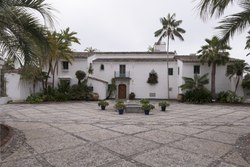
Montecito is an unincorporated town in Santa Barbara County, California, United States. Located on the Central Coast of California, Montecito sits between the Santa Ynez Mountains and the Pacific Ocean. Montecito is best known as a celebrity enclave, owing to its concentration of prominent residents. The population as of 2022 is approximately 8,638 residents. For statistical purposes, the United States Census Bureau has defined Montecito as a census-designated place (CDP).
The architecture of the United States demonstrates a broad variety of architectural styles and built forms over the country's history of over two centuries of independence and former Spanish, French, Dutch and British rule.

The Spanish Colonial Revival style is an architectural stylistic movement arising in the early 20th century based on the Spanish colonial architecture of the Spanish colonization of the Americas.
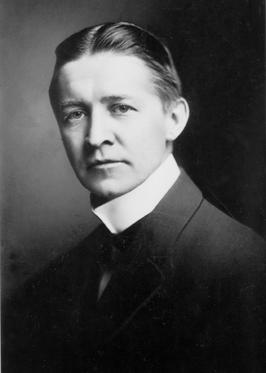
Bertram Grosvenor Goodhue was an American architect celebrated for his work in Gothic Revival and Spanish Colonial Revival design. He also designed notable typefaces, including Cheltenham and Merrymount for the Merrymount Press. Later in life, Goodhue freed his architectural style with works like El Fureidis in Montecito, one of the three estates designed by Goodhue.

The Virginia Robinson Gardens are the period landscape, historic mansion, and botanical gardens located at the Virginia Robinson Estate in Beverly Hills, California, United States.

Ganna Walska Lotusland, also known as Lotusland, is a non-profit botanical garden located in Montecito, near Santa Barbara, California, United States. The garden is the historic estate of Madame Ganna Walska. The County of Santa Barbara restricts visitation via a conditional use permit: Lotusland botanic garden is open to the public by reservation only, with walking tours 1½ to 2 hours long.
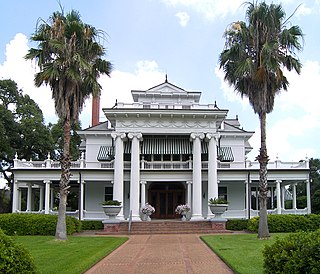
The McFaddin–Ward House is a historic home in Beaumont, Texas, United States built in 1905 1906 in the Beaux-Arts Colonial Revival style. The 12,800-square-foot (1,190 m2) house and furnishings reflect the lifestyle of the prominent family who lived in the house for seventy-five years. The house was added to the National Register of Historic Places in 1971.

The Barstow Harvey House, also known as Harvey House Railroad Depot and Barstow station, is a historic building in Barstow, California. Originally built in 1911 as Casa del Desierto, a Harvey House hotel and Santa Fe Railroad depot, it currently serves as an Amtrak station and government building housing city offices, the Barstow Chamber of Commerce and Visitor Center, and two museums.

George Washington Smith was an American architect and painter. He is known particularly for his work around Santa Barbara, California, and for popularizing the Spanish Colonial Revival style in early 20th Century America. His notable works include Casa del Herrero, the Lobero Theater, the Santa Barbara News-Press building, and buildings at the Santa Barbara Cemetery. He also designed several private houses in Montecito.

The Santa Barbara County Courthouse (Courthouse) is a well-known example of Spanish Colonial Revival architecture and is located in Santa Barbara, Santa Barbara County, California. Started in 1926 and completed in 1929, the Courthouse originally served as Santa Barbara County’s (County) superior courthouse, jail, and administrative office. The Courthouse was included on the National Register of Historic Places in 1981, was made a City of Santa Barbara Historic Landmark in 1982, a California Historical Landmark in 2004, and a National Historic Landmark in 2005. Over the years, most County administrative offices were relocated to other County buildings. The current Courthouse houses six County Superior Court rooms, the Mural Room, the County Hall of Records, the County Public Defender's Office, offices of the County General Services Department, and the McMahon Law Library. The Courthouse is open to the public and is a popular site for community gatherings and weddings. Architect Charles Willard Moore called it the "grandest Spanish Colonial Revival structure ever built," and the prime example of Santa Barbara's adoption of Spanish Colonial as its civic style.

Rancho Guajome Adobe is a historic 19th-century hacienda in Rancho Guajome Adobe County Park, on North Santa Fe Avenue in Vista, San Diego County, California. Built in 1852–53, it is a well-preserved but late example of Spanish-Mexican colonial architecture, and was designated a National Historic Landmark in 1970. It is also a California Historical Landmark and on the National Register of Historic Places.

The Paseo de la Guerra is a complex of historic buildings in downtown Santa Barbara, California. Since 1977 it is listed in National Register of Historic Places. It is named for the Guerra family of California, a historically prominent Californio family in Santa Barbara.

Carleton Monroe Winslow, also known as Carleton Winslow Sr., was an American architect, and key proponent of Spanish Colonial Revival architecture in Southern California in the early 20th century.
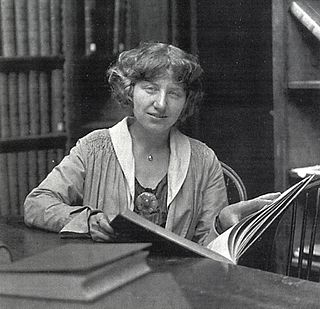
Lutah Maria Riggs was an American architect who worked for several decades in Santa Barbara, California. Born in Toledo, Ohio, she moved with her mother to Santa Barbara after high school, where she returned after receiving a BA in architecture from the University of California, Berkeley. From 1921 to 1930, she worked as a draftswoman for George Washington Smith, and she continued to work as an architect in Santa Barbara until 1980, focusing primarily on residential work. She was the first licensed female architect in Santa Barbara, and the first woman in California to be named a Fellow of the American Institute of Architects.
Francis W. Wilson was an American architect. His practice in Santa Barbara, California included work for the Atchison, Topeka and Santa Fe Railway and its associated Fred Harvey Company hotels, as well as many residences.
Roland Coate was an American architect. He designed many houses and buildings in California, three of which are listed on the National Register of Historic Places.
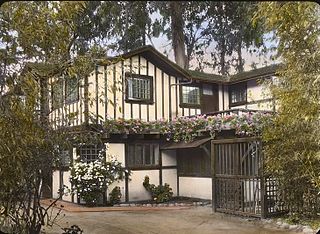
Francis Townsend Underhill was a politician from the U.S. state of New York and an amateur architect in California.
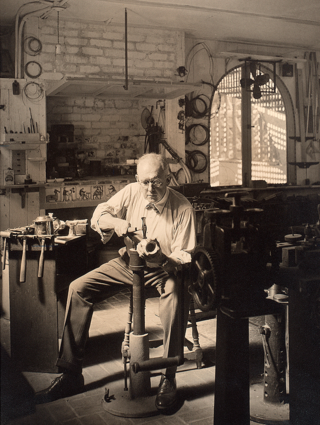
George Fox Steedman (1871–1940) was an inventor and businessman. He was the president of Curtis Manufacturing Co., a foundry and machine shop, and built Casa del Herrero.
Edwards and Plunkett was an American architectural firm active between 1925 and 1940 in Santa Barbara, California. It was founded by William Albert Edwards (1888–1976) and James Joseph Plunkett (1900–1946), who were among the most famous practitioners of the Spanish Colonial Revival style in Santa Barbara. From 1926 to 1928, Henry Ward Howell (1889–1962) was a junior partner, and they operated as Edwards, Plunkett, and Howell. Their works include the Arlington Theatre, the Janssens–Orella–Birk Building, and the original terminal building of the Santa Barbara Municipal Airport.
